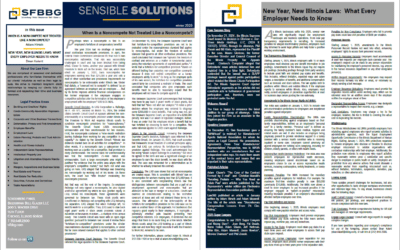Question: I want to create a deferred compensation plan for certain highly paid employees of my company to provide additional benefits for them, separate and apart from the company profit sharing and 401(k) plan. Can you advise what obstacles I must be concerned with?
Answer: Qualified retirement plans such as profit sharing and 401(k) plans are subject to a strict body of rules which govern plan operations. Other plans providing for the deferral of compensation, so called non-qualified deferred compensation plans (“NQDPs”), are free from many of the statutory rules that apply to qualified retirement plan rules. NQDPs are, nevertheless, subject to other statutory restrictions and the failure to satisfy these rules can result in significant tax consequences for the plan participants.
While the full scope of the statutory deferred compensation plan rules are extensive, some of the basic requirements that need to be satisfied are the following:
- Plan distributions can only be made to participants upon specified events, such as death, disability, termination of employment, change in control of the company or on a date or event specified in the plan at the time the plan is adopted;
- Distribution of plan benefits to participants cannot be accelerated except in limited circumstances;
- Where employers choose to discontinue the plan, restrictions apply as to when participants can receive their plan benefits; and
- Participants are generally not permitted to change their previously designated form of distribution.
Failure to meet these statutory requirements will be consequential. Where such a failure occurs, contributions allocable to affected participants in a NQDP will be taxed to participants at their regular income tax rates along with an additional 20% income tax and interest on the tax. The law does provide a remedy for NQDP operational failures, but the failure must be corrected within a specified period of time after the problem arises. Because operational failures with NQDPs are often not discovered until one or more years have passed, the tax cost can be crippling for the unwary plan participant.
While NQDPs are not subject to all of the same rules as qualified retirement plans, there are certain qualified plan rules involving reporting and disclosure and other requirements that could still apply to NQDPs. An NQDP sponsor will typically want to structure the plan to avoid the applicability of these qualified plan rules. The most common means of avoiding the qualified plan reporting and disclosure rules is to limit plan participation to a select group of highly compensated employees (“HCEs”). Because there are no strict guidelines as to what constitutes a select group of HCEs, you should determine which employees are intended to benefit under the plan and compare that number of plan participants to the total number of employees working for the company. Suffice it to say that the number of plan participants must be meaningfully less than the total number of company employees.
Once you have dealt with these threshold issues, you are left with basic plan design options. Decisions to make include the amount of contributions to be made to the plan, whether plan contributions will be made by the company, employees or both, whether you want to include in the plan a vesting schedule so that employees are encouraged to remain with the company by having their benefits become non-forfeitable over a period of years and whether participants will forfeit their benefits if they leave the company and engage in a competitive activity and/or solicit company employees or customers. Plan participants who have accumulated meaningful benefits are generally less inclined to violate these restrictive covenants and/or terminate their employment.
There are many factors to consider in adopting an NQDP. Careful consideration of the available options and the legal obstacles will yield the best result for your company.
The Tax Corner addresses various tax, estate, asset protection and other business matters. Should you have any questions regarding the subject matter or if you have questions, you want answered, you may contact Bruce at (312) 648-2300 or send an e-mail to [email protected].



